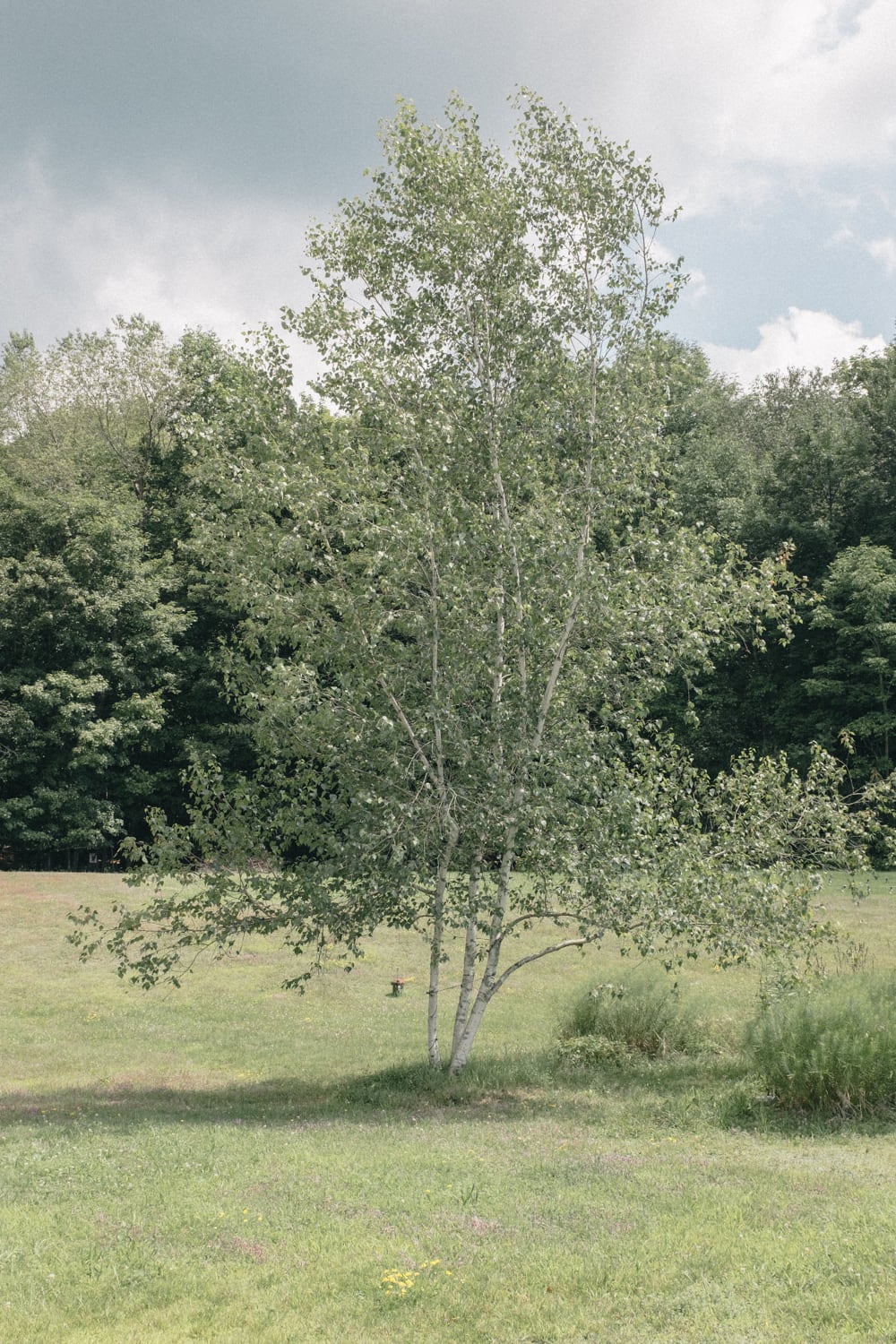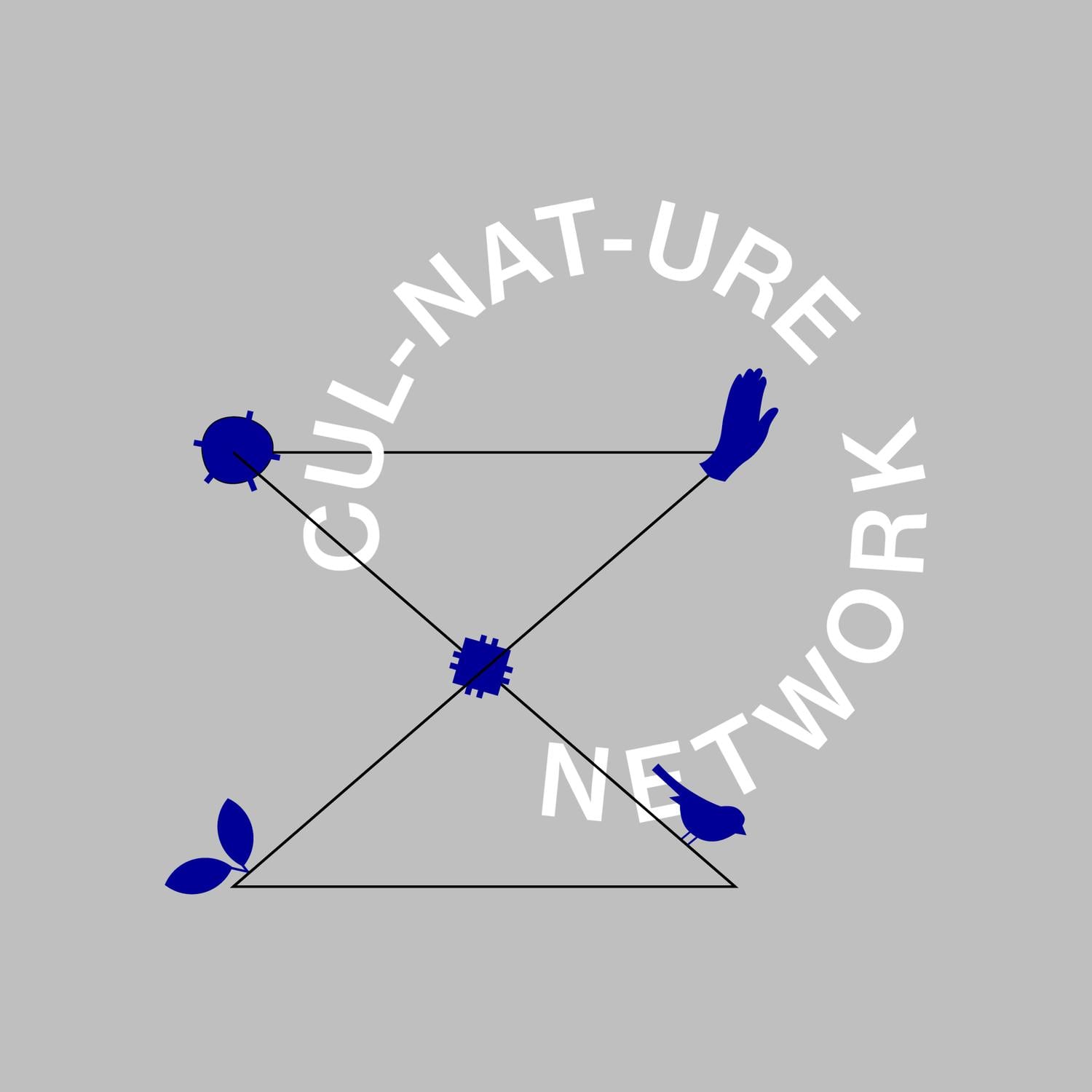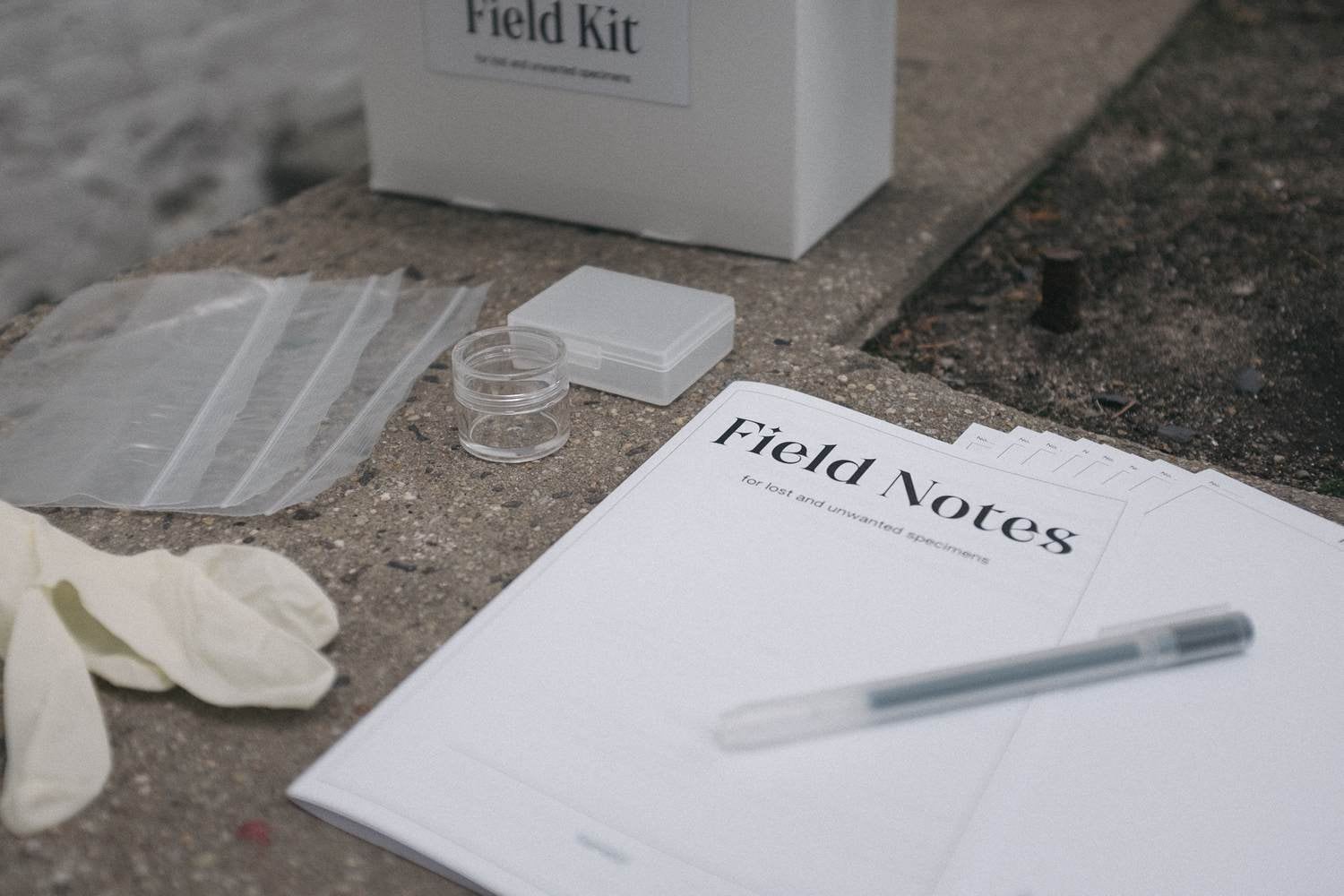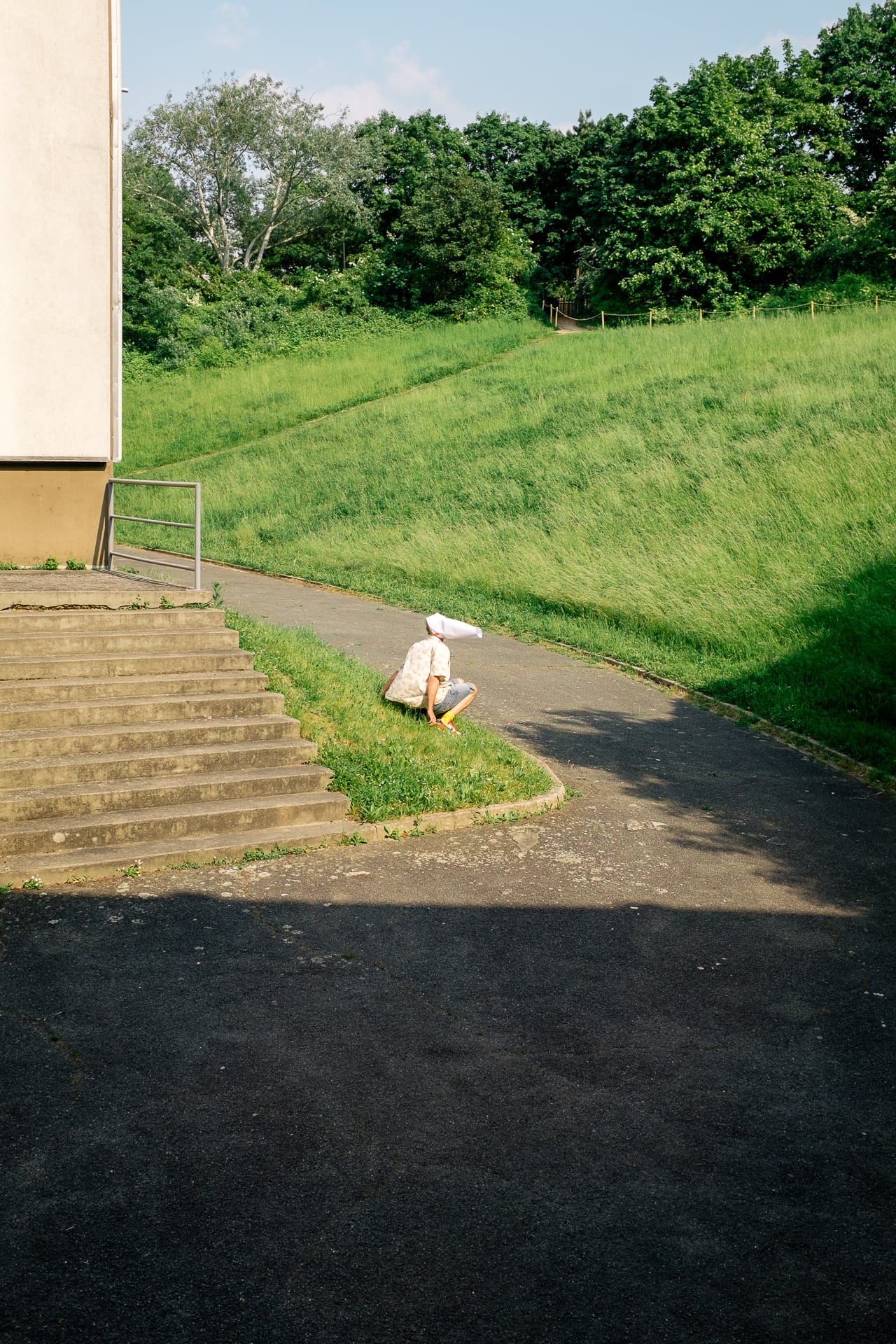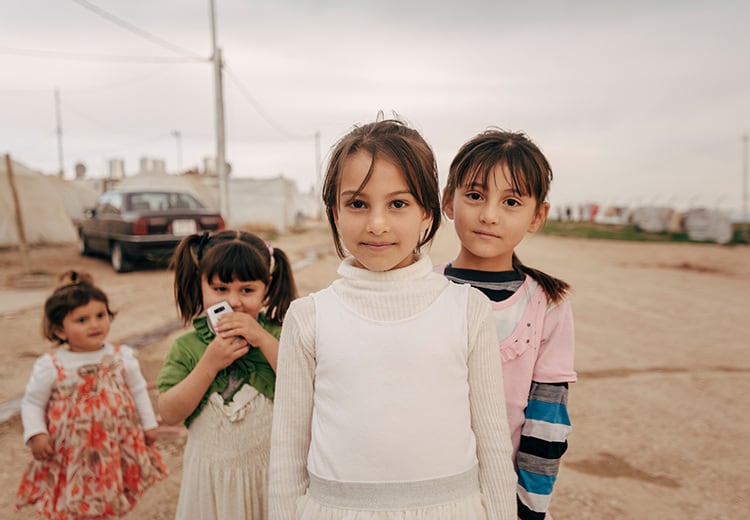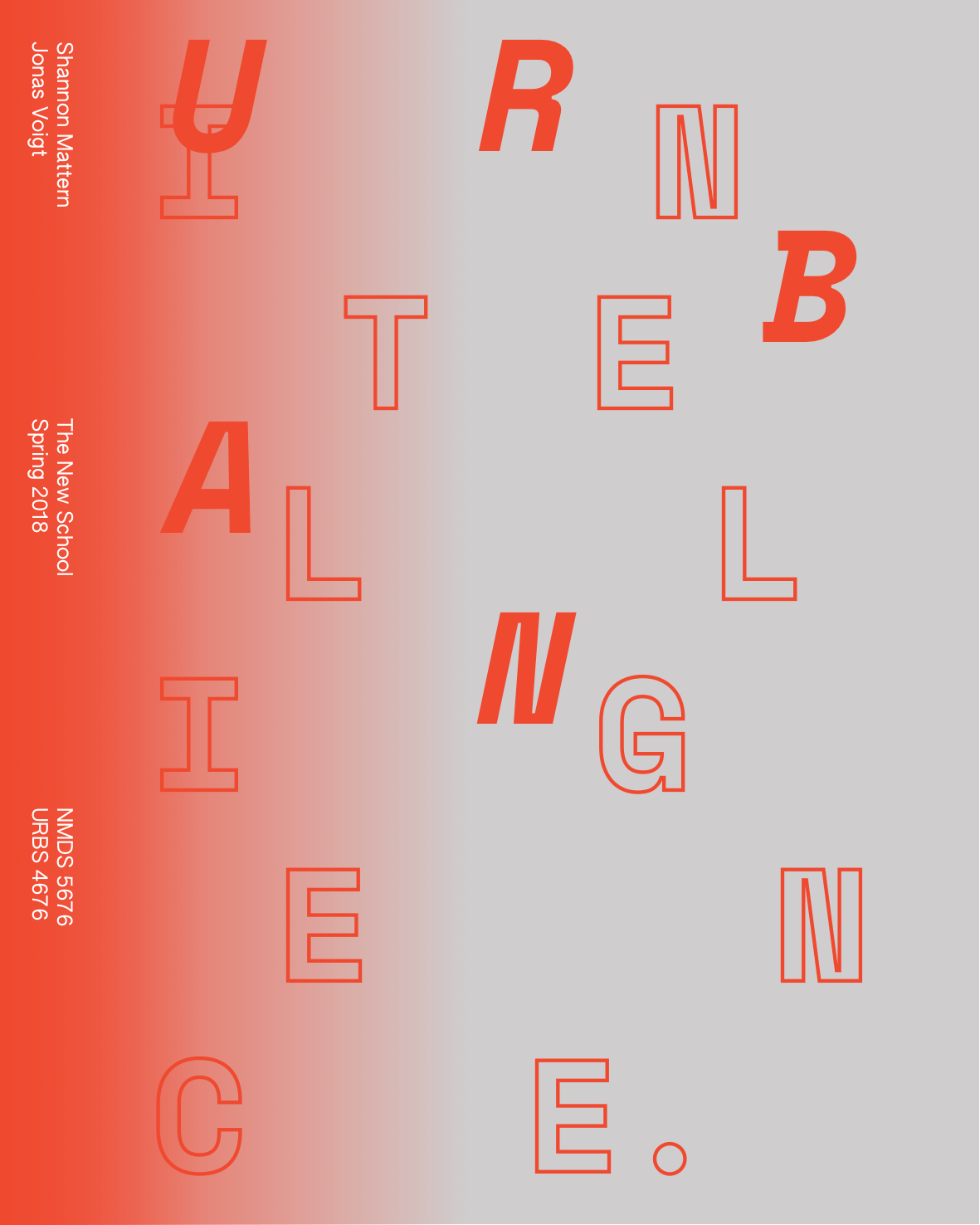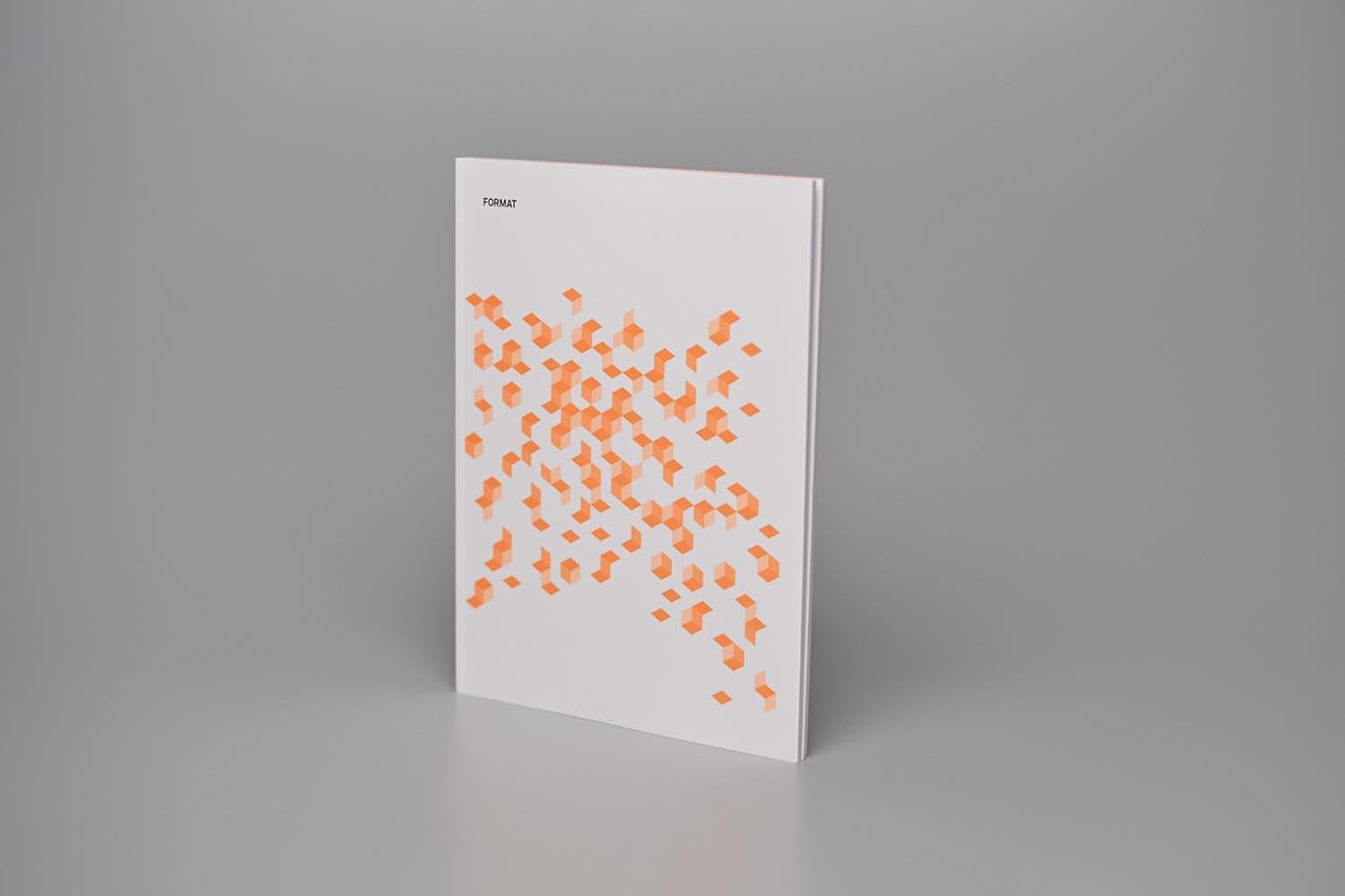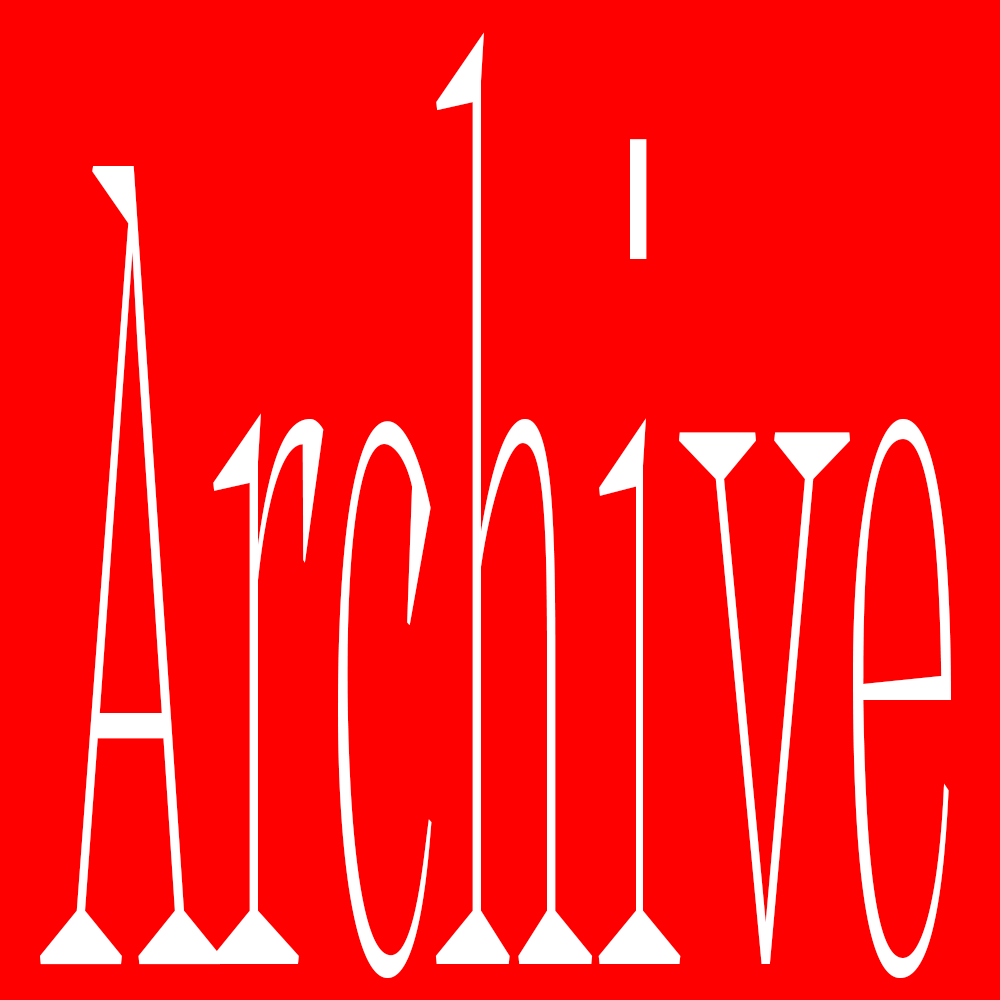CREATIVE DIRECTION / CREATIVE DIRECTION / CREATIVE DIRECTION / CREATIVE DIRECTION / CREATIVE DIRECTION / CREATIVE DIRECTION / CREATIVE DIRECTION / CREATIVE DIRECTION / CREATIVE DIRECTION / CREATIVE DIRECTION / CREATIVE DIRECTION / CREATIVE DIRECTION / CREATIVE DIRECTION / CREATIVE DIRECTION / CREATIVE DIRECTION / CREATIVE DIRECTION / CREATIVE DIRECTION / CREATIVE DIRECTION / CREATIVE DIRECTION / CREATIVE DIRECTION /
PROTOTYPING / PROTOTYPING / PROTOTYPING / PROTOTYPING / PROTOTYPING / PROTOTYPING / PROTOTYPING / PROTOTYPING / PROTOTYPING / PROTOTYPING / PROTOTYPING / PROTOTYPING / PROTOTYPING / PROTOTYPING / PROTOTYPING / PROTOTYPING / PROTOTYPING / PROTOTYPING / PROTOTYPING / PROTOTYPING / PROTOTYPING / PROTOTYPING / PROTOTYPING / PROTOTYPING / PROTOTYPING / PROTOTYPING /
SPECULATION / SPECULATION / SPECULATION / SPECULATION / SPECULATION / SPECULATION / SPECULATION / SPECULATION / SPECULATION / SPECULATION / SPECULATION / SPECULATION / SPECULATION / SPECULATION / SPECULATION / SPECULATION / SPECULATION / SPECULATION / SPECULATION / SPECULATION / SPECULATION / SPECULATION / SPECULATION / SPECULATION / SPECULATION / SPECULATION /
FACILITATION / FACILITATION / FACILITATION / FACILITATION / FACILITATION / FACILITATION / FACILITATION / FACILITATION / FACILITATION / FACILITATION / FACILITATION / FACILITATION / FACILITATION / FACILITATION / FACILITATION / FACILITATION / FACILITATION / FACILITATION / FACILITATION / FACILITATION / FACILITATION / FACILITATION / FACILITATION / FACILITATION / FACILITATION / FACILITATION /
COMMUNICATION / COMMUNICATION / COMMUNICATION / COMMUNICATION / COMMUNICATION / COMMUNICATION / COMMUNICATION / COMMUNICATION / COMMUNICATION / COMMUNICATION / COMMUNICATION / COMMUNICATION / COMMUNICATION / COMMUNICATION / COMMUNICATION / COMMUNICATION / COMMUNICATION / COMMUNICATION / COMMUNICATION / COMMUNICATION / COMMUNICATION / COMMUNICATION / COMMUNICATION / COMMUNICATION / COMMUNICATION / COMMUNICATION /
FACILITATION / FACILITATION / FACILITATION / FACILITATION / FACILITATION / FACILITATION / FACILITATION / FACILITATION / FACILITATION / FACILITATION / FACILITATION / FACILITATION / FACILITATION / FACILITATION / FACILITATION / FACILITATION / FACILITATION / FACILITATION / FACILITATION / FACILITATION / FACILITATION / FACILITATION / FACILITATION / FACILITATION / FACILITATION / FACILITATION /
SPECULATION / SPECULATION / SPECULATION / SPECULATION / SPECULATION / SPECULATION / SPECULATION / SPECULATION / SPECULATION / SPECULATION / SPECULATION / SPECULATION / SPECULATION / SPECULATION / SPECULATION / SPECULATION / SPECULATION / SPECULATION / SPECULATION / SPECULATION / SPECULATION / SPECULATION / SPECULATION / SPECULATION / SPECULATION / SPECULATION /
CREATIVE DIRECTION / CREATIVE DIRECTION / CREATIVE DIRECTION / CREATIVE DIRECTION / CREATIVE DIRECTION / CREATIVE DIRECTION / CREATIVE DIRECTION / CREATIVE DIRECTION / CREATIVE DIRECTION / CREATIVE DIRECTION / CREATIVE DIRECTION / CREATIVE DIRECTION / CREATIVE DIRECTION / CREATIVE DIRECTION / CREATIVE DIRECTION / CREATIVE DIRECTION / CREATIVE DIRECTION / CREATIVE DIRECTION / CREATIVE DIRECTION / CREATIVE DIRECTION /
EXPERIMENTATION / EXPERIMENTATION / EXPERIMENTATION / EXPERIMENTATION / EXPERIMENTATION / EXPERIMENTATION / EXPERIMENTATION / EXPERIMENTATION / EXPERIMENTATION / EXPERIMENTATION / EXPERIMENTATION / EXPERIMENTATION / EXPERIMENTATION / EXPERIMENTATION / EXPERIMENTATION / EXPERIMENTATION / EXPERIMENTATION / EXPERIMENTATION / EXPERIMENTATION / EXPERIMENTATION / EXPERIMENTATION /
STRATEGY / STRATEGY / STRATEGY / STRATEGY / STRATEGY / STRATEGY / STRATEGY / STRATEGY / STRATEGY / STRATEGY / STRATEGY / STRATEGY / STRATEGY / STRATEGY / STRATEGY / STRATEGY / STRATEGY / STRATEGY / STRATEGY / STRATEGY / STRATEGY / STRATEGY / STRATEGY / STRATEGY / STRATEGY / STRATEGY /
RESEARCH / RESEARCH / RESEARCH / RESEARCH / RESEARCH / RESEARCH / RESEARCH / RESEARCH / RESEARCH / RESEARCH / RESEARCH / RESEARCH / RESEARCH / RESEARCH / RESEARCH / RESEARCH / RESEARCH / RESEARCH / RESEARCH / RESEARCH / RESEARCH / RESEARCH / RESEARCH / RESEARCH / RESEARCH / RESEARCH /
DESIGN / DESIGN / DESIGN / DESIGN / DESIGN / DESIGN / DESIGN / DESIGN / DESIGN / DESIGN / DESIGN / DESIGN / DESIGN / DESIGN / DESIGN / DESIGN / DESIGN / DESIGN / DESIGN / DESIGN / DESIGN / DESIGN / DESIGN / DESIGN / DESIGN / DESIGN / DESIGN /
RESEARCH / RESEARCH / RESEARCH / RESEARCH / RESEARCH / RESEARCH / RESEARCH / RESEARCH / RESEARCH / RESEARCH / RESEARCH / RESEARCH / RESEARCH / RESEARCH / RESEARCH / RESEARCH / RESEARCH / RESEARCH / RESEARCH / RESEARCH / RESEARCH / RESEARCH / RESEARCH / RESEARCH / RESEARCH / RESEARCH /
STRATEGY / STRATEGY / STRATEGY / STRATEGY / STRATEGY / STRATEGY / STRATEGY / STRATEGY / STRATEGY / STRATEGY / STRATEGY / STRATEGY / STRATEGY / STRATEGY / STRATEGY / STRATEGY / STRATEGY / STRATEGY / STRATEGY / STRATEGY / STRATEGY / STRATEGY / STRATEGY / STRATEGY / STRATEGY / STRATEGY /
EXPERIMENTATION / EXPERIMENTATION / EXPERIMENTATION / EXPERIMENTATION / EXPERIMENTATION / EXPERIMENTATION / EXPERIMENTATION / EXPERIMENTATION / EXPERIMENTATION / EXPERIMENTATION / EXPERIMENTATION / EXPERIMENTATION / EXPERIMENTATION / EXPERIMENTATION / EXPERIMENTATION / EXPERIMENTATION / EXPERIMENTATION / EXPERIMENTATION / EXPERIMENTATION / EXPERIMENTATION / EXPERIMENTATION /
CREATIVE DIRECTION / CREATIVE DIRECTION / CREATIVE DIRECTION / CREATIVE DIRECTION / CREATIVE DIRECTION / CREATIVE DIRECTION / CREATIVE DIRECTION / CREATIVE DIRECTION / CREATIVE DIRECTION / CREATIVE DIRECTION / CREATIVE DIRECTION / CREATIVE DIRECTION / CREATIVE DIRECTION / CREATIVE DIRECTION / CREATIVE DIRECTION / CREATIVE DIRECTION / CREATIVE DIRECTION / CREATIVE DIRECTION / CREATIVE DIRECTION / CREATIVE DIRECTION /
PROTOTYPING / PROTOTYPING / PROTOTYPING / PROTOTYPING / PROTOTYPING / PROTOTYPING / PROTOTYPING / PROTOTYPING / PROTOTYPING / PROTOTYPING / PROTOTYPING / PROTOTYPING / PROTOTYPING / PROTOTYPING / PROTOTYPING / PROTOTYPING / PROTOTYPING / PROTOTYPING / PROTOTYPING / PROTOTYPING / PROTOTYPING / PROTOTYPING / PROTOTYPING / PROTOTYPING / PROTOTYPING / PROTOTYPING /
SPECULATION / SPECULATION / SPECULATION / SPECULATION / SPECULATION / SPECULATION / SPECULATION / SPECULATION / SPECULATION / SPECULATION / SPECULATION / SPECULATION / SPECULATION / SPECULATION / SPECULATION / SPECULATION / SPECULATION / SPECULATION / SPECULATION / SPECULATION / SPECULATION / SPECULATION / SPECULATION / SPECULATION / SPECULATION / SPECULATION /
FACILITATION / FACILITATION / FACILITATION / FACILITATION / FACILITATION / FACILITATION / FACILITATION / FACILITATION / FACILITATION / FACILITATION / FACILITATION / FACILITATION / FACILITATION / FACILITATION / FACILITATION / FACILITATION / FACILITATION / FACILITATION / FACILITATION / FACILITATION / FACILITATION / FACILITATION / FACILITATION / FACILITATION / FACILITATION / FACILITATION /
COMMUNICATION / COMMUNICATION / COMMUNICATION / COMMUNICATION / COMMUNICATION / COMMUNICATION / COMMUNICATION / COMMUNICATION / COMMUNICATION / COMMUNICATION / COMMUNICATION / COMMUNICATION / COMMUNICATION / COMMUNICATION / COMMUNICATION / COMMUNICATION / COMMUNICATION / COMMUNICATION / COMMUNICATION / COMMUNICATION / COMMUNICATION / COMMUNICATION / COMMUNICATION / COMMUNICATION / COMMUNICATION / COMMUNICATION /
Jonas Voigt (b. 1992, Germany) believes that the ways design inquiry tackles wicked problems helps to shape relationships between humans, non-humans, technologies and ecologies. It is a commitment that underpins Jonas's work as a freelance design strategist, researcher, and as educator. This obligation has been shaped by transdisciplinary experiences and collaborations made across institutions in Germany and North America.
Jonas currently practices and implements design strategy and research in venture building and digital transformation at Etribes in Hamburg, Germany.
He is an alumnus of the Mellon Sawyer Seminar on Imaginative Mobilities and of the Design Realities Studio at The New School in New York. Jonas taught in Integrated Design, Strategic Design and Management at Parsons School for Design Strategies, currently lectures at Design Dessau, and at HfG Schwäbisch Gmünd. Further, he is involved in founding Grey Noise Studio and The Complicity.
Jonas holds an MFA in Transdisciplinary Design from Parsons School of Design (USA), a BA in Communication Design from Hochschule für Gestaltung in Schwäbisch Gmünd (Germany), and studied Sustainable Design Strategies at Emily Carr University of Art and Design in Vancouver (Canada).
He is a member of the German Society for Design Theory and Research (Deutsche Gesellschaft für Designtheorie und -forschung, DGTF) since 2021.
Jonas’s work has been featured, exhibited and awarded internationally. Notable features include publications in Form, Core77, WIRED and BBC Future. Exhibitions at the Vitra Design Museum, Walker Art Center, Vienna Biennale, and XXII Triennale di Milano.
Permanent collections include The New School Libraries & Archives, Design Museum Holon and Philadelphia Museum of Art.
Feel free to get in touch and say hello.
Capabilities
Design-led Research
Participatory Action Research
Visual Communication
Creative & Art Direction
Stakeholder Alignment
Actionable Foresight Strategy
Strategic Planning
Scenario Development
Service Design
User Experience
Ethnography
Systems Thinking
Research Synthesis
Applied Phenomenology
Workshop Design
Facilitation
Rapid Prototyping
Human-Centered Design
Monitoring & Evaluation
Impact Areas
Social Impact Innovation
Community-led Development
Environmental Justice
Education & Capacity Building
Participatory Policy
Social & Restorative Justice
Transportation
Actionable Futures
Digital Equity
Selected Clients
Cross Innovation Hub
Etribes
United Peers
ZEIT Akademie
Jakob Jakob
Muse Case
Sustainable Futures Lab
The Engine Room
Business for Social Responsibility™
The Residency
NASA Langley Research Center
Siemens Healthineers
The New School
ArtHelps
Imprint
Full CV available upon request.
Please use these instructions on how to use the most widely known email encryption standard PGP. Fingerprint: 9A87 F463 73DE 2B9E DA5C 43AA B6B6 681C 4104 4C58
I employ Matomo, an ethical analytics alternative, on servers hosted at Manitu (GER) running on renewable energy. I respect your privacy and don’t use cookies on this site.
Unless otherwise indicated, all materials are copyrighted by Jonas Voigt, 2022.
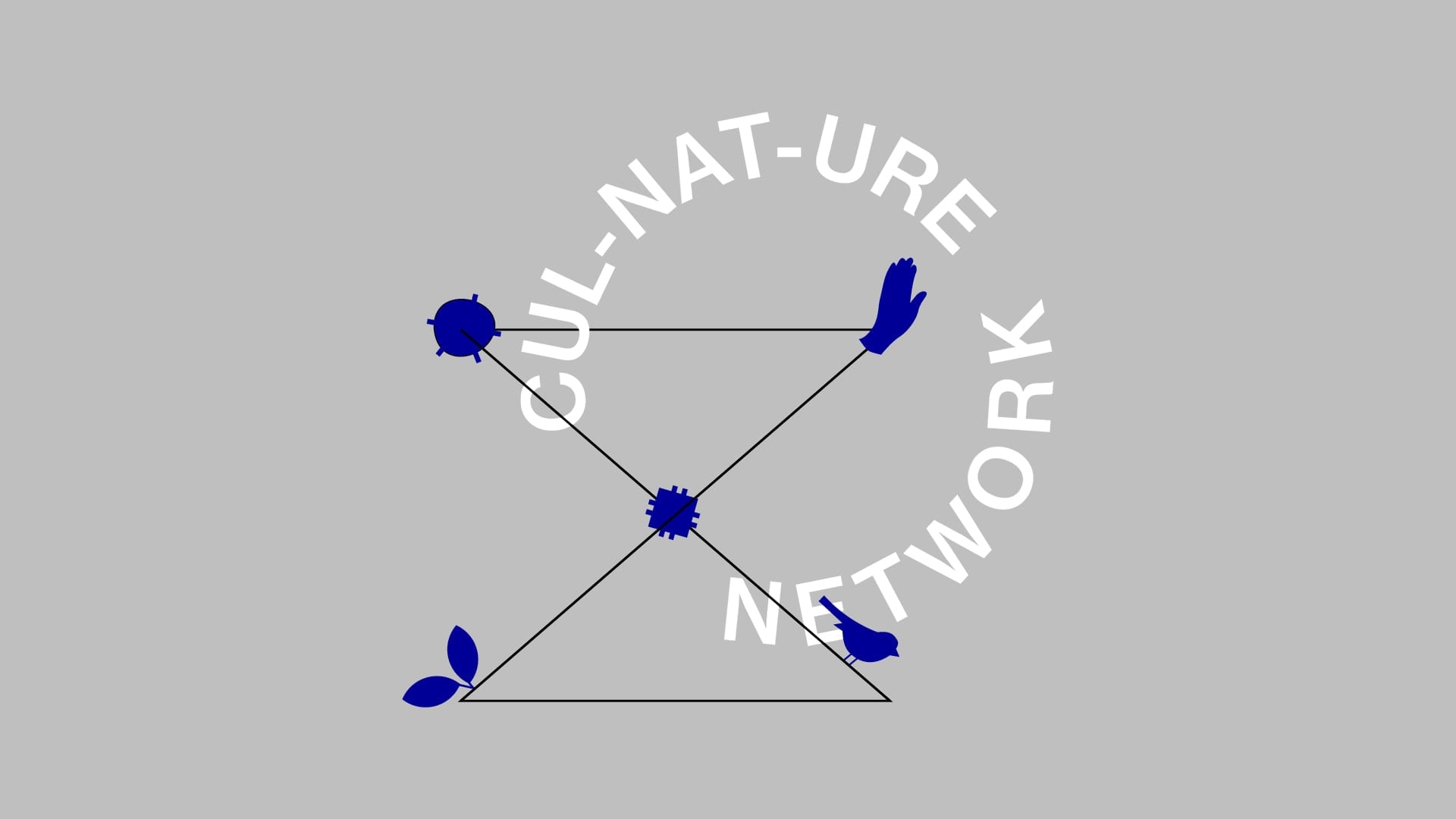






Post Social: Towards design beyond the human
Design Research, 2019
Forthcoming in “NERD - New Experimental Research in Design 2” edited by Christensen, Michelle, Michel, Ralf and Jonas, Wolfgang. Birkhäuser, 2021. ISBN 9783035623666.
Abstract
Human activity has unprecedentedly transformed Planet Earth, the atmosphere, the surface, and ecosystems. Today, all living and non-living beings are facing ecosystem collapses. If one does not rapidly quetion contemporary living, thinking and making, all beings will have to face environmental degradation as never experienced before.
Contemporary design discourse aims to understand complexity by utilizing systems thinking. Pursuing to holistically understand the conditions in which design projects are mostly human-, or user-centered. This limited understanding of context through the lens of the human is reproducing unintended adverse, like the co-creation of climate change.
In contrary, Post-Social Design advocates towards understanding that we are nature and that being natural always means to be more than just human. It proposes a paradigm shift within the discipline that fosters inclusivity of non-human entities and the acknowledgment of interconnectedness. Research on urban forests showed the street tree’s loss of social capacities, as trees reside in isolation of each other. Soil-exchange practices embrace the complexity to think of alternative realities to foster ontological and ecological transitions towards interrelatedness.
Excerpt
“Design, stripped to its essence, can be defined as the human capacity to shape and make our environment in ways without precedent in nature, to serve our needs and give meaning to our lives.”1
The notion of ‘social design’ and ‘human-centered design’ require urgent redefinition. Post-Social Design advocates for inclusivity of non-human entities and the acknowledgment of interconnectedness of human and nature in the design discourse. The term society descends on the Latin word sŏcĭĕtas, meaning “fellowship, association, union, community, society (implying union for a common purpose).”2 The term society used without an article implies the entirety of humanity. It derived from the noun sŏcĭo (social), describing “to join or unite together, to associate; to do or hold in common, or to share a thing with another".3 The definition relates, again, to the interaction between parties of human entities.
Post-Social Design is in line with Bruno Latour’s critiques of “the sociology of the social”, the usage of society to study society. He proposes a “sociology of association” (actor-network theory) which tries to study the association of agents, the relational settings of elements (or non-human and human beings). The social becomes a principle of connections, rather than the context of existence.4
Post-Social Design uses the term post, referring to of time, afterward, after, later, to introduce a makeshift in design, post the era of human-centricity, and calls for embracement of Latour’s notion of relationality and the inclusion of more-than-human entities. The term “Post-Social Design” provides an alternative and expands towards beyond the human and necessarily to the posthuman. The ambition of this ontological claim might bring clarity and theoretical productivity towards new processes and research in design. Post-social communities are posthuman unions, which are grounded by the coexistence on this planet.
The concept of the “the posthuman,” stands for, as Laura Forlano identified, “the non-human, the multispecies, the anthropocene, the more than human, the transhuman and the decentering of the human.”5 Forlano points out that humanity will be adaptable with its methods, frameworks, and practices while engaging with “non-human knowledge and ways of being in the world.” She further argues that an expanded “understandings of the multiple agencies, dependencies, entanglements, and relations” will emerge.6 She concludes that related practices are not yet developed and grounding posthuman theory in practice has yet to be done. In short, Design must engage with epistemological and ontological concerns.
Post-Social Design “must transcend the limitations of human-centered design.”7 With “Post-Social” I refer to a society that extends beyond the human, as Eduardo Kohn writes: “Beyond […] exceeds, at the same time that it is continuous with, its subject matter; [design] beyond the human is still about the human, even though and precisely because it looks to that which lies beyond it—a “beyond” that also sustains the human.”8 Post-Social Design addresses the meaning of humanity not in separation but in relation to nature and culture. As we now understand that everything is being designed, even “the climate, processes, and refugee camps,”9 it is about time to acknowledge worlds’ interdependency. This intention advocates for a “new social design”10 practice, which “specificity lies in its definition of social as its [relationality] rather than in the objects it ends up creating.”11 Its early stages sit in-between “agnostic design” and “design activism”. Its outcomes “are strange and [it uses] interventions that lead to debate.”12 Its modes are manifested not so much in the artifacts of practices, but more in the performative aspects of interventions in the public. A public of “disruptions”13 in which multispecies co-existence provoke and “reframe the relation between [entities].”14 The Post-Social Design paradigm thus emerges in the global search for rapid change and multi-species cohabitation. It sates itself as an essential pursuit worthy of further investigation.15

Furthermore, have social scientists and theorists never earnestly considered the design discipline and its implications across scales. Escobar notes, that “designers have gone about their task without sufficient critical awareness of the fundamental fact that what they do indelibly shapes the kinds of subjects we become, the ecologies we inhabit, what we enable or destroy.”16
Anne-Marie Willies describes this notion as ontological design: “We design our world, while our world acts back on us and designs us.”17 The French philosopher, anthropologist and sociologist Bruno Latour expresses in the proceedings of the 2008 annual international conference of the design history society:
“What is more, design has been extended from the details of daily objects to cities, landscapes, nations, cultures, bodies, genes, and, as [he] will argue, to nature itself – which is in great need of being re-designed.”18
Cited Work
1 Heskett, John. Design: A very short introduction. Vol. 136. Oxford University Press, 2005.
2 Lewis, Charlton Thomas, William Freund, and Charles Short. A Latin dictionary: founded on Andrews' edition of Freund's Latin dictionary. Clarendon Press, 1969.
3 Short, Charles, Ethan Allen Andrews, William Freund, and Charlton Thomas Lewis. A Latin dictionary: founded on Andrews' edition of Freund's Latin dictionary. Clarendon Press, 1879.
4 Latour, Bruno. Reassembling the Social: An Introduction to Actor-Network-Theory. Oxford: Oxford University Press USA - OSO, 2005. Accessed May 4, 2019. ProQuest Ebook Central, 4-15.
5 Forlano, Laura. "Posthumanism and design." She Ji: The Journal of Design, Economics, and Innovation 3, no. 1 (2017): 16-29, 17.
6 Forlano, Laura. "Posthumanism and design." She Ji: The Journal of Design, Economics, and Innovation 3, no. 1 (2017): 16-29, 17.
7 Faste, Haakon. "A Post-Human World Is Coming. Design Has Never Mattered More." Fast Company. July 10, 2018. Accessed April 29, 2019. https://www.fastcompany.com/3060742/a-post-human-world-is-coming-design-has-never-mattered-more.
8 Kohn, Eduardo. How forests think: Toward an anthropology beyond the human. University of California Press, 2013.
9 von Borries, Friedrich. To Project the World: Towards a Political Theory of Design. Suhrkamp Verlag, 2016.
10 Koskinen, Ilpo. "Agonistic, convivial, and conceptual aesthetics in new social design." Design Issues 32, no. 3 (2016): 18-29.
11 Koskinen, Ilpo. "Agonistic, convivial, and conceptual aesthetics in new social design." Design Issues 32, no. 3 (2016): 18-29, 18.
12 Koskinen, Ilpo. "Agonistic, convivial, and conceptual aesthetics in new social design." Design Issues 32, no. 3 (2016): 18-29, 28.
13+14 Rancière, Jacques. Aesthetics and its Discontents. Polity, 2009, 72.
15 Koskinen, Ilpo. "Agonistic, convivial, and conceptual aesthetics in new social design." Design Issues 32, no. 3 (2016): 18-29, 29.
16 Escobar, Arturo. "Arturo Escobar On His Book Designs for the Pluriverse: Radical Interdependence, Autonomy, and the Making of Worlds." Rorotoko. April 22, 2018. Accessed April 05, 2019. http://rorotoko.com/interview/20180423_escobar_arturo_on_book_designs_pluriverse_radical_interdependence/?page=4.
17 Willis, Anne-Marie. "Ontological designing." Design philosophy papers4, no. 2 (2006): 69-92, 70. 18 Latour, Bruno. "A cautious Prometheus? A few steps toward a philosophy of design (with special attention to Peter Sloterdijk)." In Proceedings of the 2008 annual international conference of the design history society, pp. 2-10. 2008.
Special Thanks
Jason Stein (Advanced Volunteer Coordinator, Parks Stewardship), Peter Lechnir (Forest Restoration Project Leader), and Dylan Di Luccio (Community Organizer) at New York City Department of Parks and Recreation.
Thanks to John Bruce, Anthony Dunne, Jamer Hunt, Fiona Raby, and Joey Lee. Further thanks to the faculty advisors Patricia Beirne, Elliott Montgomery, Lara Penin, Eduardo Staszowski, Jilly Traganou, and Anna Matthiesen.
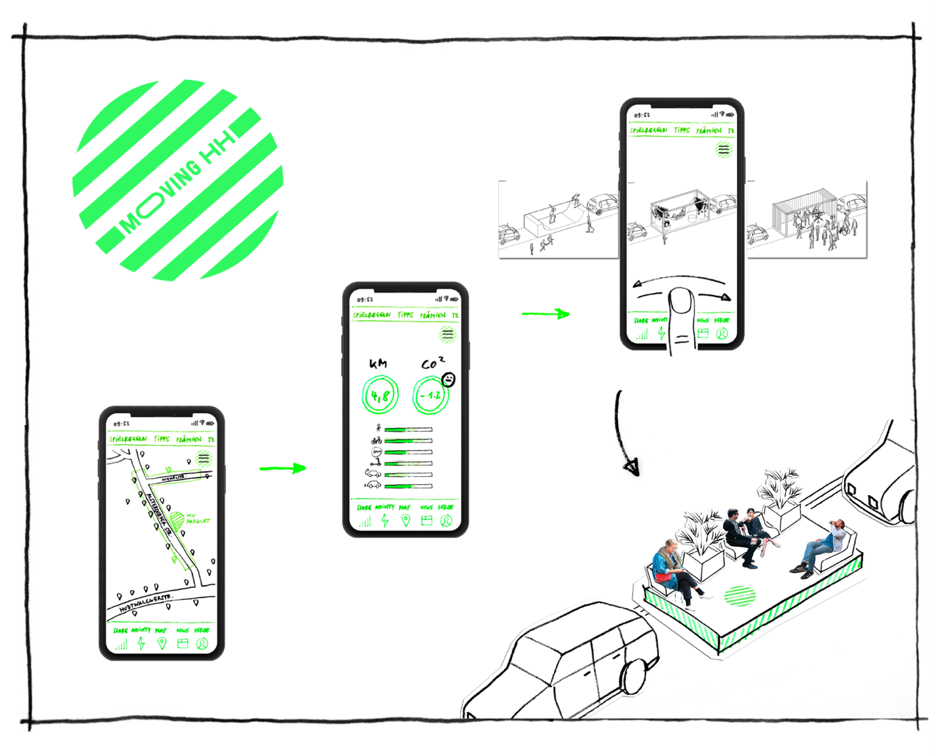
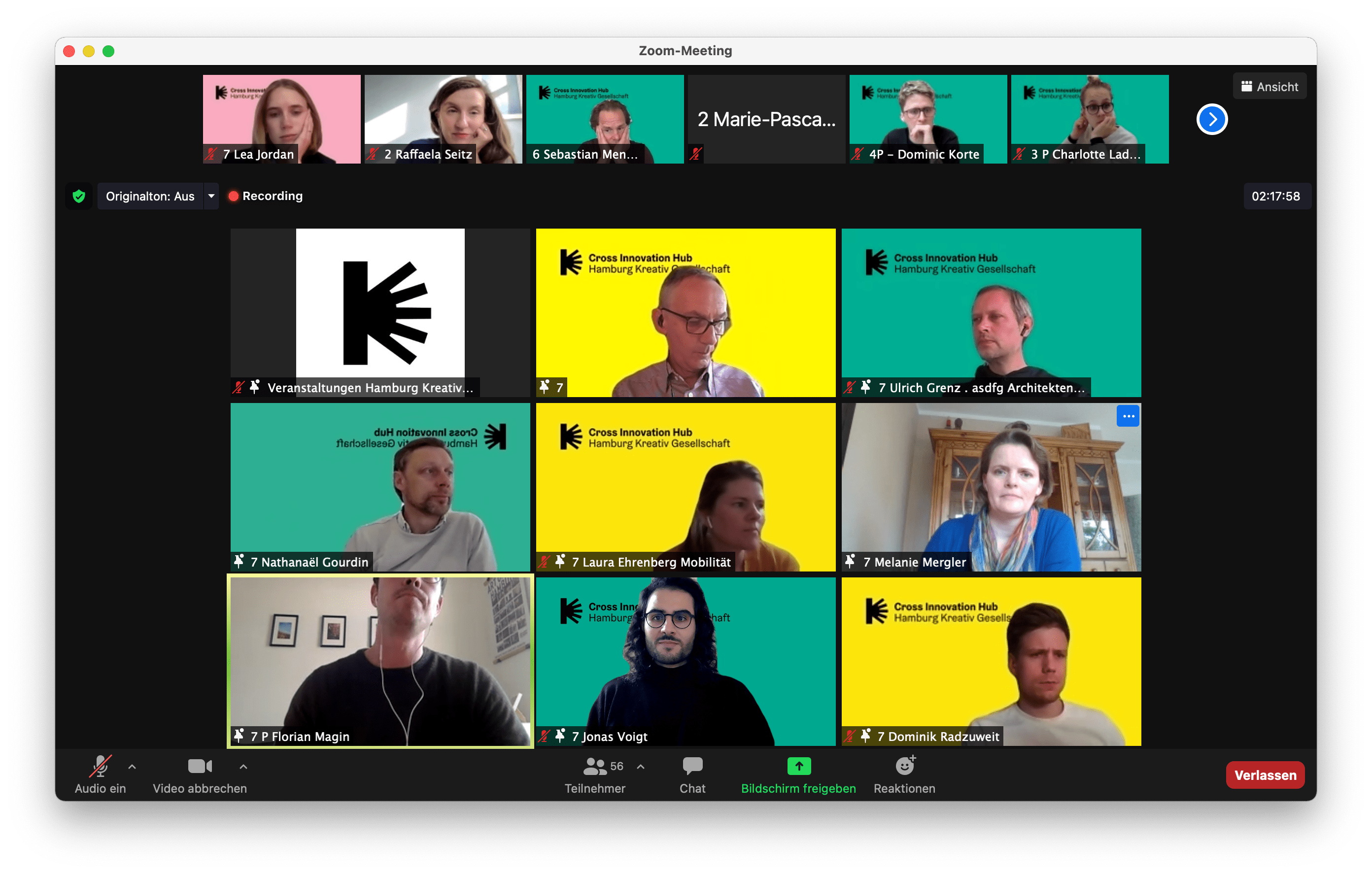

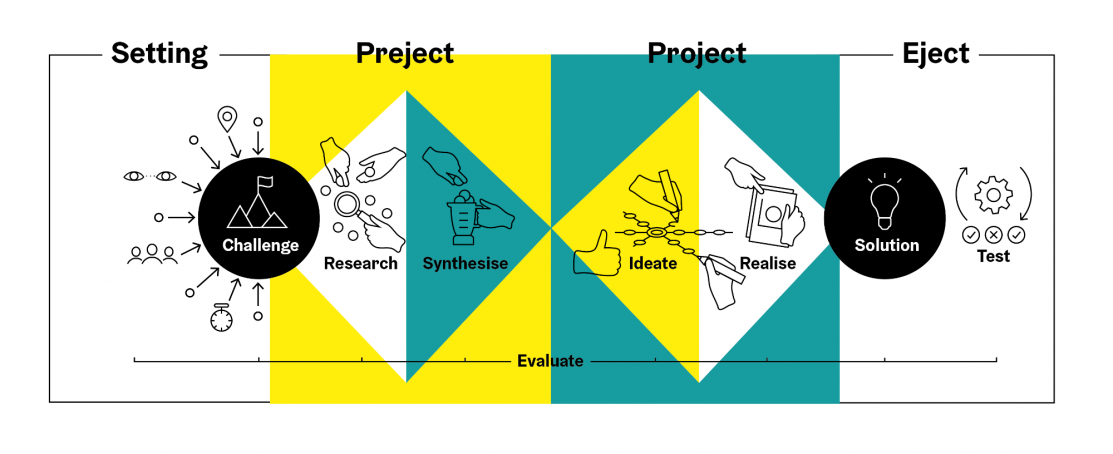
Cross Innovation Lab 2021: Klima
Transformation Design, 2021
Weitere Infos auf der offiziellen Seite des Cross Innovation Lab: ︎︎︎ Eine Kultur für nachhaltige Mobilität.
Mobilitätskultur und Lebensqualität
Was passiert, wenn Verkehrsbetriebe und Landesbehörden für Infrastruktur in Zusammenarbeit mit drei Kreativen (Ulrich Grenz, Jonas Voigt und Nathanaël Gourdin) über das Thema Mobilität nachdenken? Es entstehen spannende und unerwartete Lösungen mit dem Fokus Mobilitätskultur und Lebensqualität.
Im Rahmen des von der Hamburg Kreativgesellschaft initiiertem »Cross Innovation Lab 2021: Klima« wurde ein partizipatives Kommunikationskonzept für eine neue Mobilitätskultur entwickelt, das Bürger:innen dazu animieren soll, sich nachhaltig zu bewegen und den städtischen Raum dabei mitzugestalten.
In Wettbewerbsform werden über eine App mittels CO2-Tracking Punkte gesammelt, die zur Umgestaltung von Stellflächen (rePlace) für einen Zeitraum von 6 Monaten genutzt werden können. Mithilfe von Augmented Reality können die zur Auswahl stehenden Parklet-Module (Bühne, Ausstellungsfläche, Mini-Markt, Lounge, Fahrrad-Repair-Station…) am ausgesuchten Standort visualisiert werden. So werden neue Begegnungsorte für eine lebenswerte Stadt geschaffen. Ein spielerisches Wettbewerbsprinzip nutzt so den Anreiz der Mitgestaltung und Teilhabe an der Mobilitätswende: Je nachhaltiger die Mobilität, desto mehr wird die Stadt zu einem öffentlichen, belebten und zukunftsfähigen Lebensraum – Moving City for Future.
Prägnant, frisch und flexibel: Die für das Vorhaben entwickelte Dachmarke MovingHH dient sowohl dem Kommunikationsprozess für eine neue Mobilitätskultur in Hamburg als auch der Kennzeichnung der Parklets als eine erste Maßnahme. Sie ist sowohl für die eigenständige Nutzung als auch als add-on zu anderen Marken konzipiert.
Wenn Mobilität zum Umsteigen einlädt…
Unser Kreativ-Team
- Ulrich Grenz: Architekt, Gründer und Partner von asdfg Architekten BDA
- Jonas Voigt: Freiberuflicher Designer und Stratege, weitere Infos unter jonas—voigt.com
- Nathanaël Gourdin: Designer, Gründer und Geschäftsführer von Studio Gourdin GmbH
Unternehmen
- Hamburger Hochbahn
- Hamburger Verkehrsverbund
- hySOLUTIONS
- Landesbetrieb Straßen, Brücken und Gewässer
- Behörde für Verkehr und Mobilitätswende
- PMO#Digital;
mit Melanie Mergler, Laura Ehrenberg, Kathrin Gisdon, Joachim Wiucha, Lilli Russ, Florian Magin, Daniel Schulz und Dominik Radzuweit.
(Quelle Prozellgrafik: Cross Innovation Hub - Unsere Methoden)
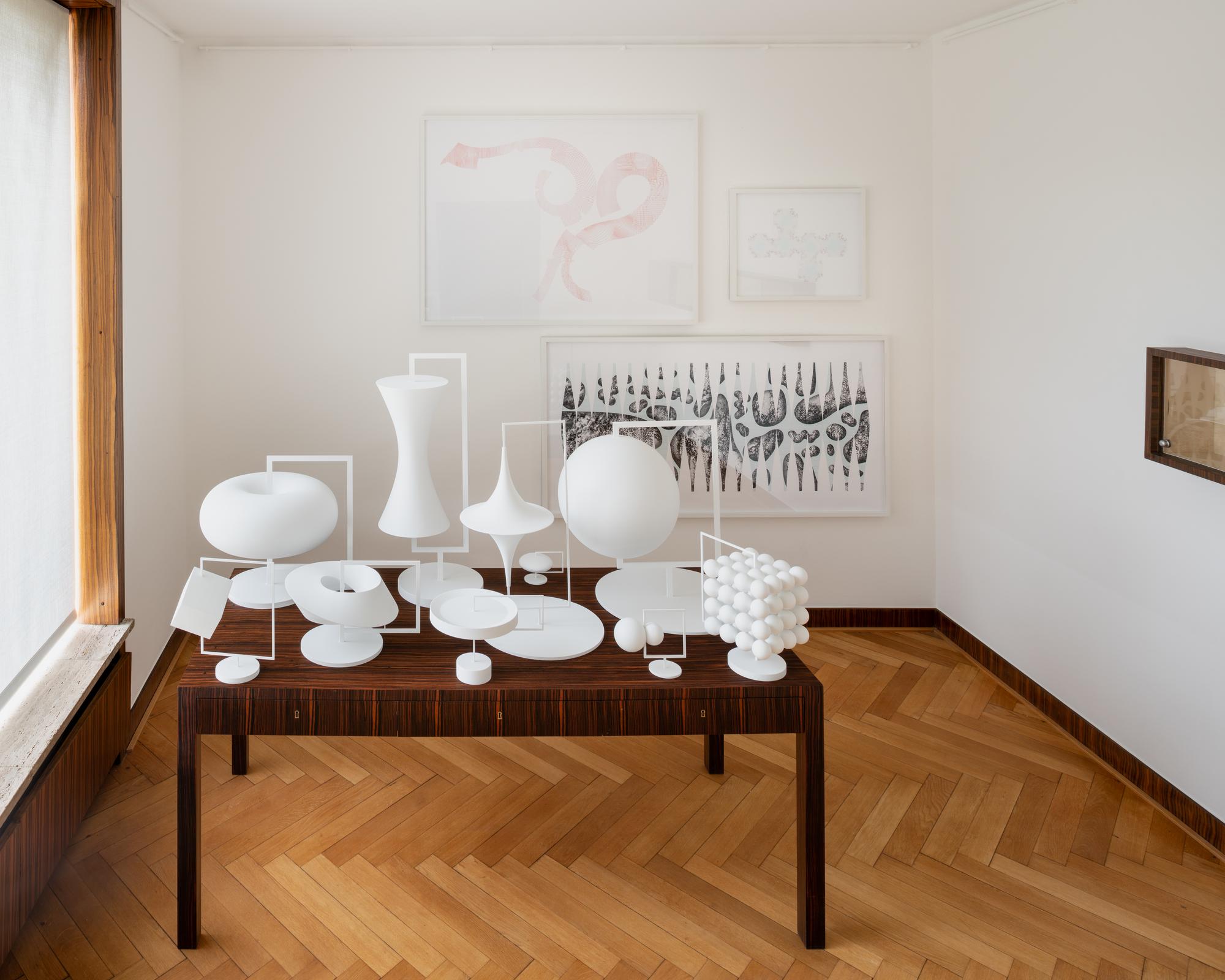
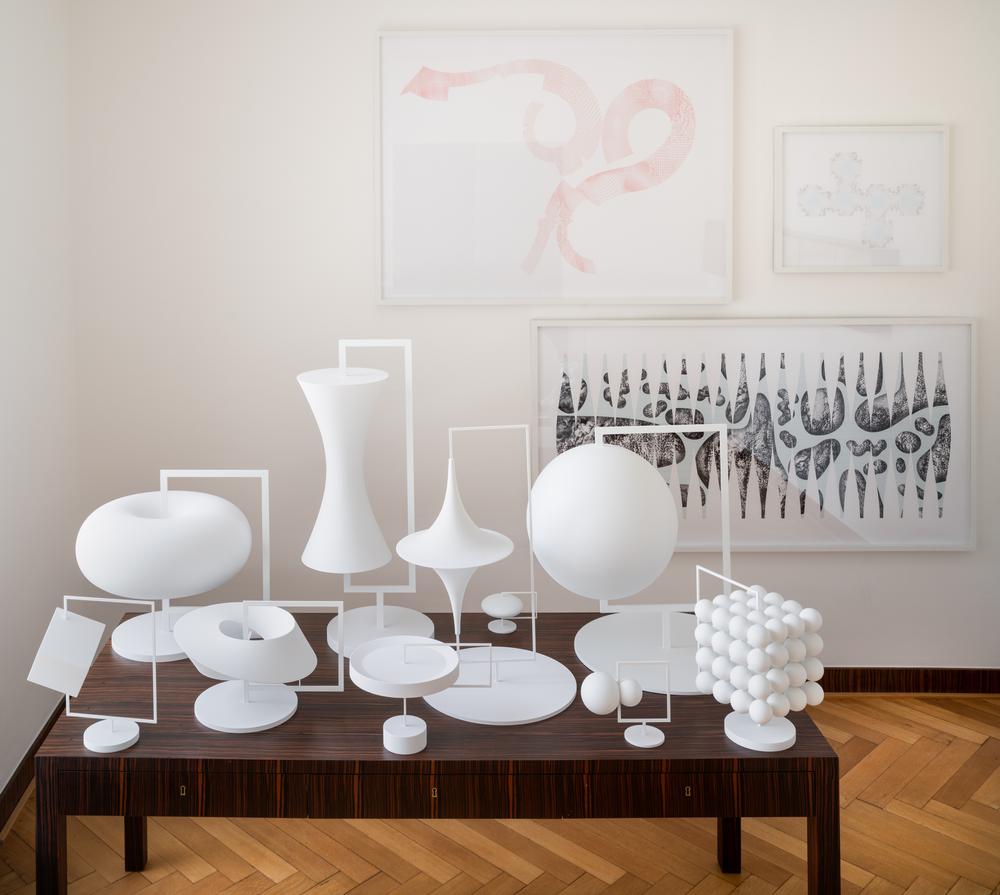
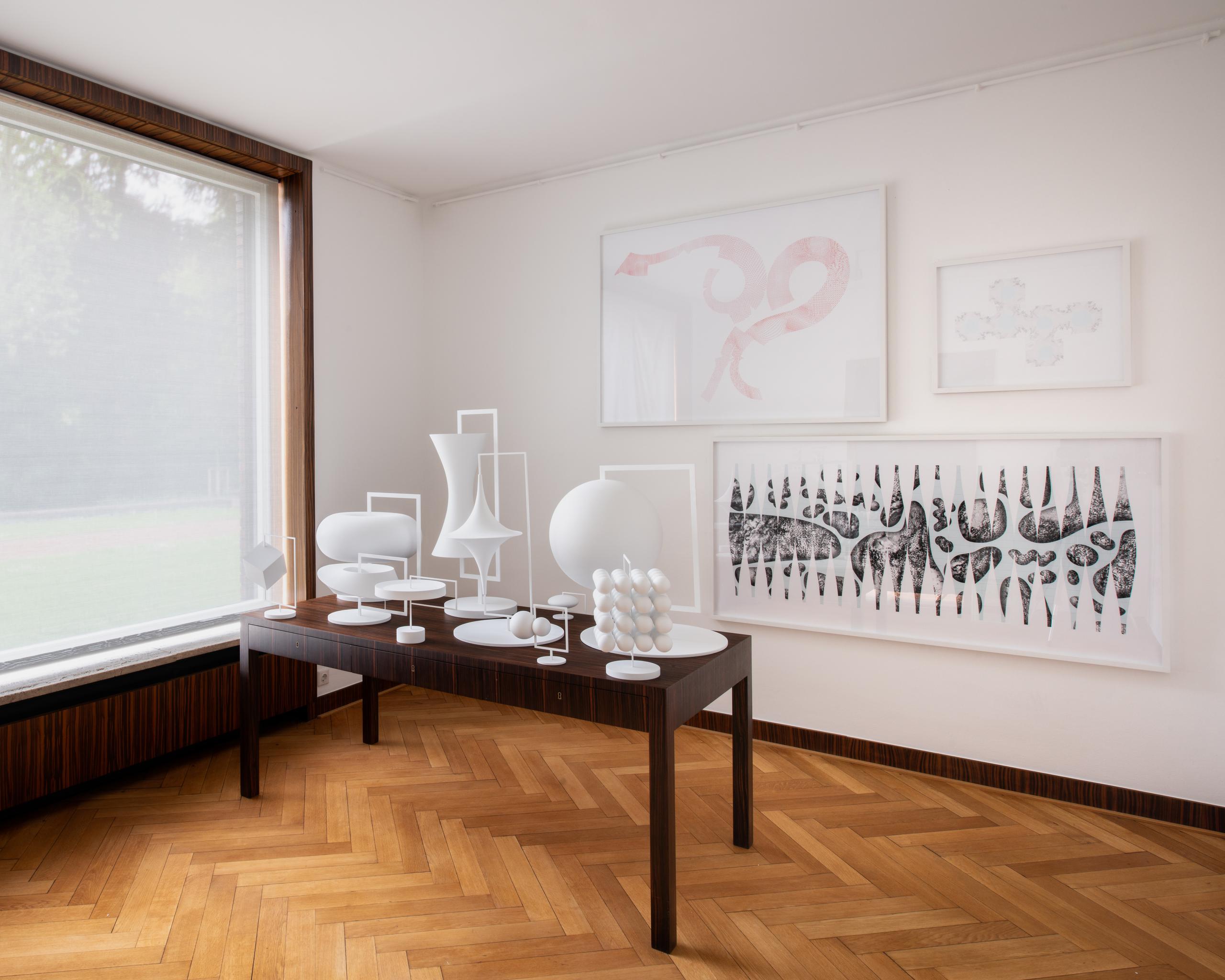



An Archive Of Impossible Objects: Globes
Speculative Design, 2019
Exhibited at the Centre Pompidou (2020) and Kunstmuseen Krefeld (2019).
Globes
The Globes are a commission from the Kunstmuseen Krefeld for its contribution to the Germany-wide Bauhaus100 program in 2019, marking the centennial anniversary of the Bauhaus:
“Living and dwelling go hand in hand. Countless different forms of domestic interiors are situated between the beautiful living environments featured in lifestyle magazines and public housing, between individual home design and visionary social models.”
In the late 1920s, the international architect Ludwig Mies van der Rohe (1886–1969) designed Haus Lange and Haus Esters in Krefeld—two villas that merge the personal style of their inhabitants and the architect’s own utopian aspirations. How did one live in these houses in the past, how mobile is our present-day society and what forms of living can be expected in the future are the main themes of the “Alternatives For Living” project. For this the Mies villas will be converted into a discussion platform. Sixteen international artists, architects and designers will realize innovative living and dwelling concepts for the two houses as well as the garden area.
Our contribution focused on the globe. Today, as a domestic object, the globe is almost a form of kitsch, but we found its status as one of the oldest conceptual models of our world, made physical, fascinating. Rather than focusing on one world, ours, we identified other worlds from literature, amateur thought experiments and the fringes of science that represent different kinds of imaginations, all co-existing, jostling for room within one space. Three imaginary topographical maps accompany the globes, something we’d like to develop in future with other collaborators. Each map makes use of conventional markings, but don’t quite make sense, suggesting different kinds of atmosphere, climate, geology, forces, and fields to those shaping our world.
Special thanks
— Anthony Dunne, Project Lead
— Fiona Raby, Project Lead
— Katia Baudin, Director
— Sylvia Martin, Associate Director
— Magdalena Holzhey, Curator of Collections
— Julia Reich
— Carolyn Kirscher, Design Assistance
— Devon Reina, Design Assistance
︎ Project website Dunne & Raby
︎ Exhibition information
︎ Curators Statement (+ in EN)

